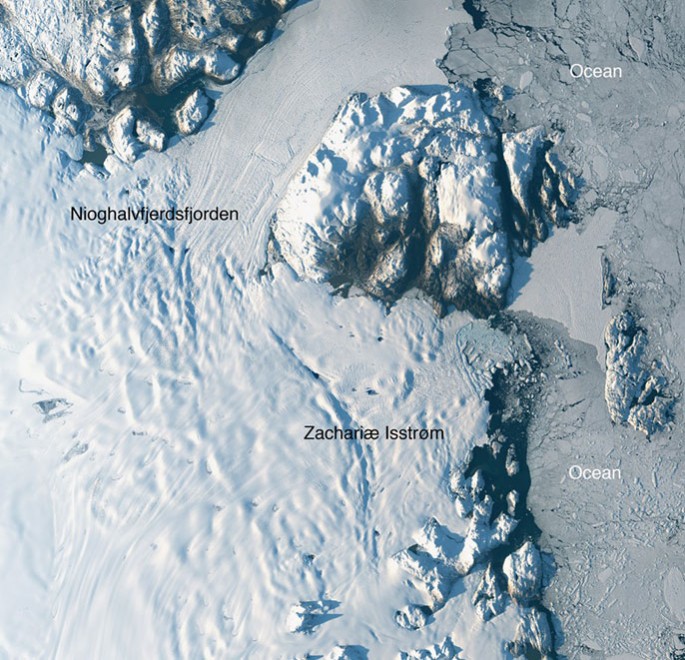One of the three major, massive glaciers in northeast Greenland is apparently melting at a much faster rate leading to rising sea levels that could continue into the decades. The Zachariæ Isstrøm is one of those glaciers, which is located in the Northeast Greenland Ice Stream that stretches for 373 miles long which also drains 12 percent of the island's interior ice sheet.
In this new study, NASA scientists reveal findings that this large glacier is already in a dangerous phase of accelerated retreat since the fall of 2012. This means that the glacier's ice velocity rate has tripled due to warmer temperatures, causing hotter air and water temperatures, forcing the glacier to detach from the stabilizing sill which supposed to anchor it to coastline.
According to NASA, this glacier drains ice from a region spanning 35,440 miles roughly equating to five percent of the ice sheet. However, on its own, this glacier holds enough water to raise global sea levels by more than 18 inches.
According to Jeremie Mouginot from the University of California, Irvine, the North Greenland glaciers are now changing rapidly where the shape and dynamics of the Zachariæ Isstrøm already changed dramatically in the last few years. Unfortunately, the glacier is now breaking up and calving high volumes of icebergs, releasing them into the ocean.
Apart from this glacier, its also massive neighbor known as Nioghalvfjerdsfjorden is also rapidly melting however, retreating in a much slower rate. The melting of these colossal glaciers can raise sea levels around the world at an estimated more than 39 inches in total.
To obtain these data, the team conducted aerial surveys under NASA's Operation IceBridge and collected images from numerous international space agencies. Apart from radar and optical images sent from space, the team also relied on a sensitive radar sounder, gravimeter, and laser profiling systems. These instruments were all utilized to measure changes in size and position, including the shape of the regional glacial ice.
According to lead author of the study, Eric Rignot from the Department of Earth System Science at the University of California, Irvine, who is also from NASA's Jet Propulsion Laboratory, the Zachariæ Isstrøm is now being targeted from above and below where the top of the glacier is melting due to increasing air temperatures while below the glacier, warmer ocean currents are breaking the glacier into bits as it retreats into deeper ground.
This new study is published in the journal Science.



























